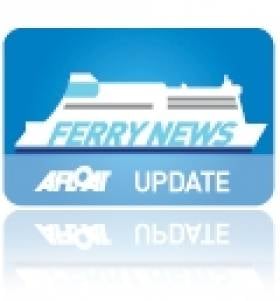Displaying items by tag: Celtic Array
Plans for Wind Farms Withdrawn Welcomed by Manx Ferry Operator
#FerryWindFarm - A decision to withdraw plans to develop wind farms in the Irish Sea which could allegedly have threatened the Isle of Man's vital maritime transport links has been welcomed by the Isle of Man Steam Packet Company.
According to the ferry operator's website, the Crown Estate has accepted a request from Centrica and DONG Energy, operating as Celtic Array, to end the offshore wind zone agreement for the Round 3 Irish Sea Zone, ceasing development activity and terminating its seabed rights.
Celtic Array had identified three potential development areas off the coast of Wales; the North East Potential Development Area, which was put on hold due to concerns raised by the Isle of Man Steam Packet Company, Rhiannon and the South West Potential Development Area.
All of these schemes have now been abandoned, with Celtic Array blaming challenging ground conditions discovered during an assessment of the seabed in the zone and saying the project had become 'economically unviable with current technology'.
It has been reported that Centrica is taking a £40m charge as a result of the decision, 'principally in respect of writing off the total book value of the project', and that there are no plans to re-offer the zone to the market.
The Steam Packet have raised serious concerns about the proposed developments and the potential impact on its routes serving the island. The operator commented that if the NE development in particular went ahead the Island would face a 'wall of wind farms' across its key routes. That concern has been reflected by many others in the Island, including the Government, the Chamber of Commerce and Travelwatch Isle of man.
A further Irish Sea project, as previously reported on Afloat.ie is the proposed extension to the Walney Offshore Wind Farm, which is currently before the UK Planning Inspectorate.
The DONG Energy site is off the Cumbrian coast, 31km from the Isle of Man, and concerns have been raised about the potential cumulative impact on sea routes of this extension if developed alongside new wind farms in the Irish Sea.
Steam Packet Company CEO Mark Woodward said: 'We welcome the decision by Celtic Array to withdraw from its planned developments and the decision of The Crown Estates to agree that decision.
'For more than two years we and others in the Island have been raising serious concerns about the impact these developments could have on the Isle of Man. The development of the Walney Extension and these proposed sites, in conjunction with existing wind farms, could have left us without viable adverse weather routes, which are essential for safe navigation in the adverse weather which can be common in this sea area.
'Cancellations arising from the lack of alternative routes would have had a massive impact on the Isle of Man. Our services are a lifeline for the Island, carrying around 600,000 passengers annually, 170,000 cars, motorcycles and coaches, and more than 400,000 metres of freight vehicles which provide critical supplies.
'The loss of viable adverse weather routes would have threatened our ability to provide those vital services, resulting in a serious negative socio-economic impact for us and the whole of the Isle of Man.'
He added: 'Many of us in the Island have been saying throughout that the sites proposed by Celtic Array were not viable, and it is a shame it has taken so much time, money and anxiety for the Island for the developer to arrive at the same conclusion.
'The withdrawal of these proposed developments is a sensible step and one we, and I'm sure many in the Island, welcome.'





























































